A Village it does take
To Be
Joy to the weary
Music to the heart
Health to the sick
Wealth to the poor
Food to the hungry
Home to the wanderer
Jubilation to the jaded
Who Cares - What Matters
Made Me a
Better Person
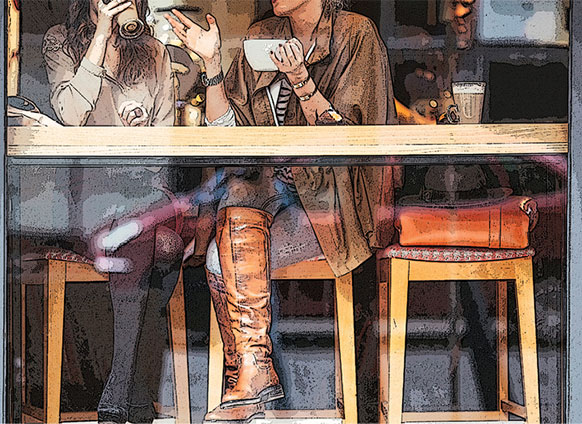
Cecilia begins the article by admitting: “I don’t know his name, but his messy, shoulder-length hair hides a pair of hauntingly blue eyes. It’s a warm September day in New York, but he’s sitting under a mountain of ragged bits of clothing, towels and blankets. In one hand, he loosely holds a piece of string attached to the neck of a small, mangy-looking dog lying next to him. In the other hand, he clutches a nearly empty bottle of cheap vodka. His bright eyes briefly glance at me without recognition or focus. I don’t know what makes me pause.
My initial thought is to give him money, though I just avoided eye contact with the last 10 people, sputtering that I didn’t have any. And my mom’s words come to mind: “He’ll only spend it on drugs or alcohol.” So I turn to the closest Nathan’s stand and buy him a hot dog, chips and soda.
When I approach him, I feel awkward, my donation insignificant. As if I’m offering a glass of water to a man trapped in a burning building. Is he more of a ketchup or mustard guy? The absurd thought turns my face hot. What comfort will a nutritionally deficient meal with a side of dehydration be to a man who sleeps on cement and spends a life generally invisible to the world?
But when he sees my outstretched hands, he smiles, dropping the bottle and leash to accept the meal with shaky fingers. We don’t exchange any words, but his smile lingers with me.
Cecilia goes on to tell us that it’s only the sixth day of her month-long challenge to find the joy in making someone’s day every day, and up until now, she had felt like a failure. It wasn’t for lack of trying, but rather questioning whether seemingly small gestures were actually accomplishing my goal. Can we really find joy by giving to those around us? Can random acts of kindness actually increase and sustain happiness?
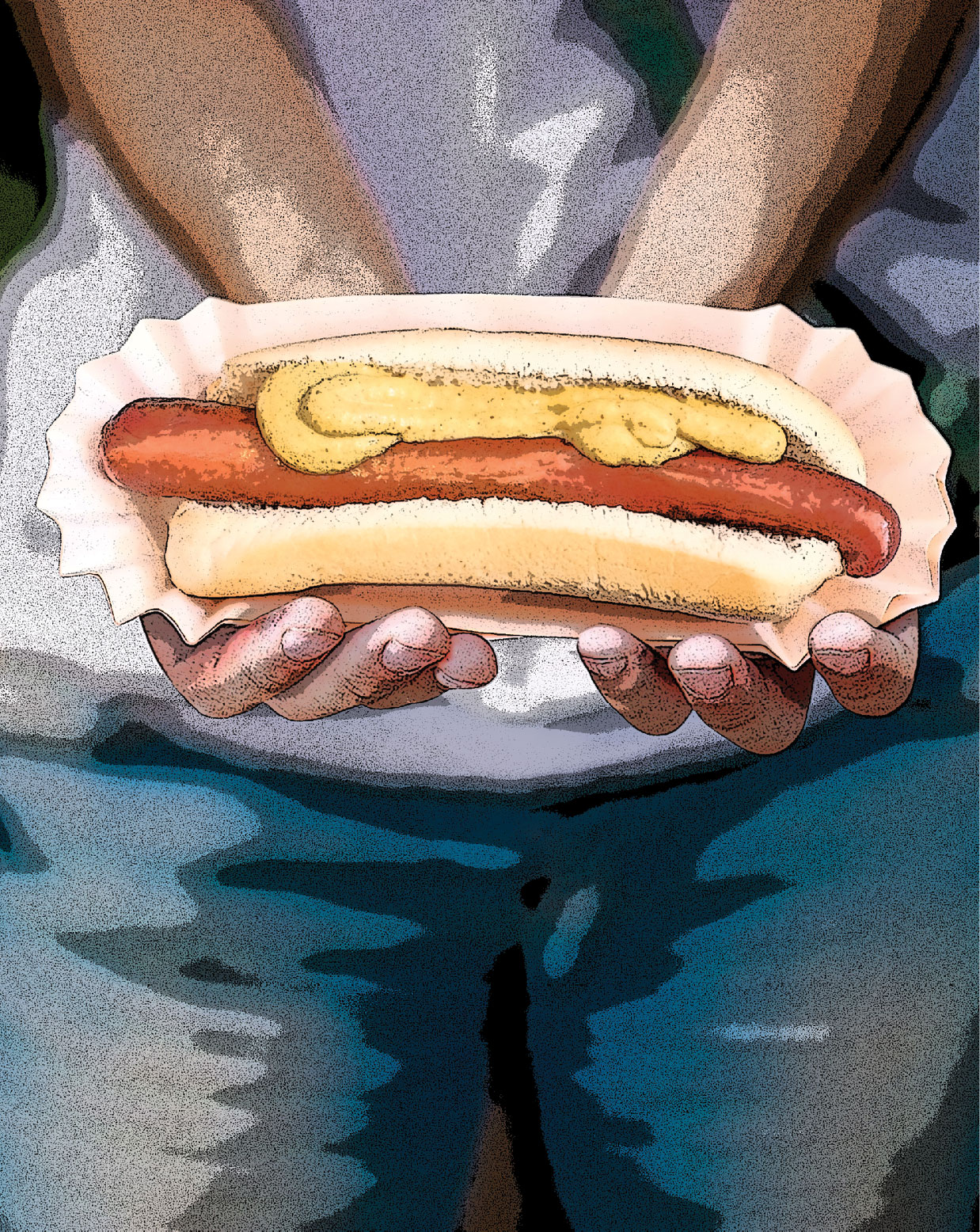
Related: How to Make Others Feel Significant
Turns out they can, but there are exceptions. To find lasting happiness through generosity requires a suppression of our ego, an analysis of our motives and a reflection on how these acts alter our perception of the world.
As children, our parents tell us to make up for misbehaving by doing something nice for someone. As adults, we help friends move into a new house; we bring hot meals to new mothers; we might even donate time or money to local charities a few times a year. After all, it’s naturally uncomfortable to see a friend (or stranger) suffering or in need. Call it karma or mojo, but these acts are generally reciprocated. We receive tax breaks, returned meals and favors, thank-you notes. Tit for tat.
But what about pure, altruistic generosity, without the expectation of receiving something in return? What about being a true Caring Catalyst just to be a mere Caring Catalyst? Some researchers argue this type of generosity doesn’t exist. But Cecilia set out to see whether she could learn to give without the promise of getting. She made lists of various kind acts and placed reminders on her bathroom mirror, her work computer, her car dashboard: Make someone’s day today!
Cecilia’s first act of kindness was buying coffee for the woman behind her in the drive-thru lane at Starbucks. In fact, her first few acts were buying something for someone—lunch for an old friend, a copy of her favorite book to a stranger—but they didn’t make her feel much of anything. The recipients were grateful, but she wondered if she was actually making their day, and was that really boosting her happiness?
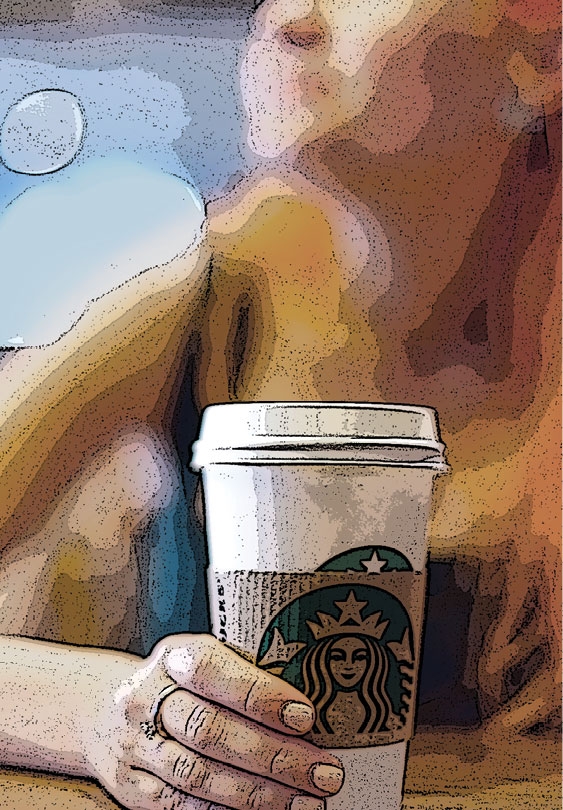
At the end of each day, she reflected how being kind made her feel. She dug for tangible proof of her growth. Some days felt more significant: buying cough syrup for the two coughing boys in pajamas at the pharmacy, for example. Their father, who had dark circles under his eyes, rubbed the bridge of his nose as his credit card was declined a second time. She said couldn’t tell whether he was more embarrassed or grateful, but she’d like to think he slept a little easier that night, and left the pharmacy feeling pretty good.
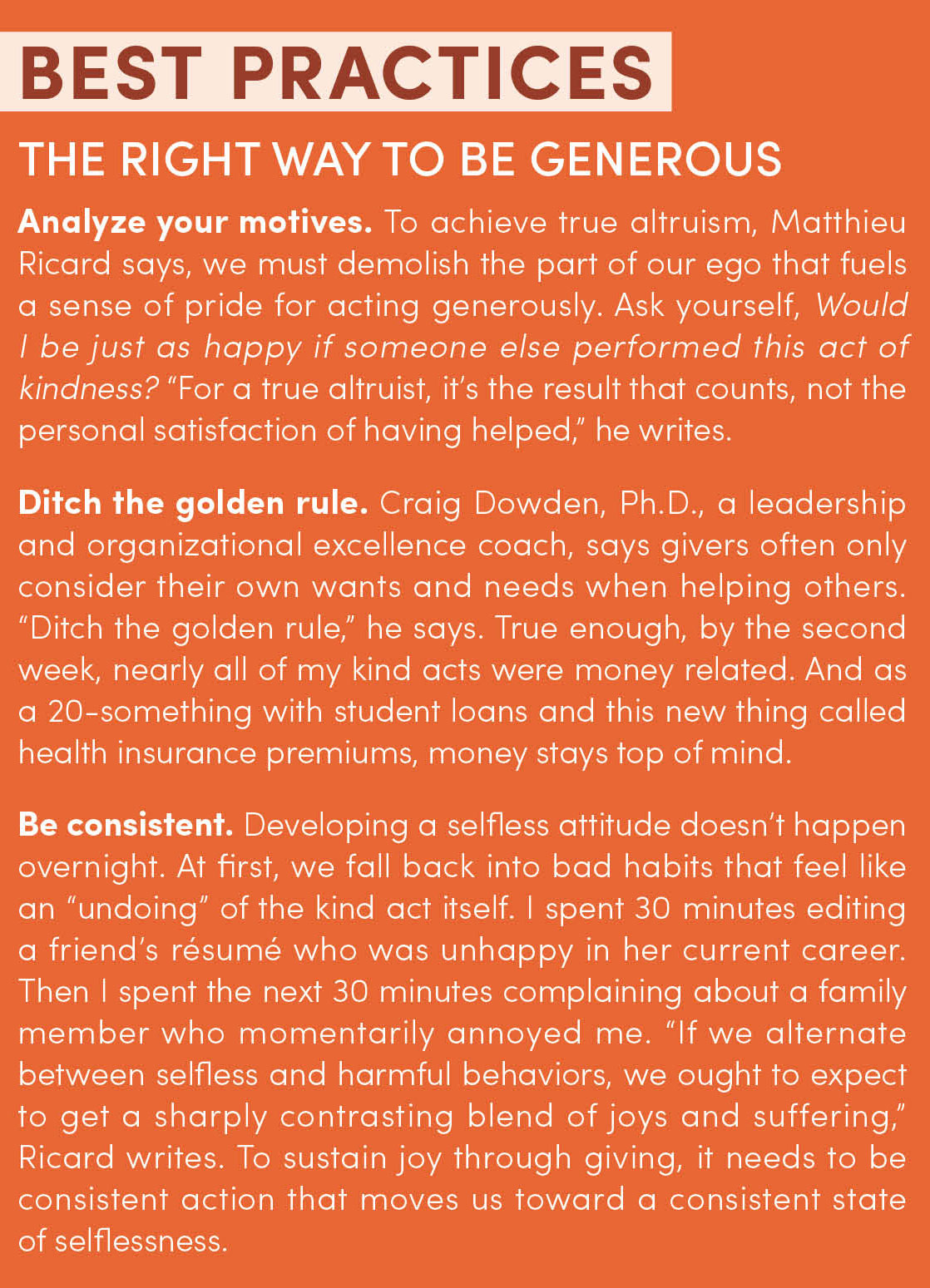
Countless studies tout the physical, mental and social benefits of receiving generosity. But until the 1980s, the effects on the giver were relatively unknown. Sonja Lyubomirsky, Ph.D., a psychology professor at UC Riverside and a leading happiness researcher, conducted a study in 2004 to determine whether committing five random acts of kindness would increase positive emotions. The short-term study revealed promising results with heightened levels of positive emotions, particularly in the participants who carried out all five acts of kindness on the same day. Spreading the acts over a week, Lyubomirsky theorized, led to a repetitive and often unoriginal pattern that either didn’t change the level of positive emotions or, in some cases, even lowered it.
Admittedly, Cecilia said she experienced some form of generosity fatigue around the second week of her challenge. It’s easy to float through the day wrapped up in our own heads, focusing only on what directly impacts us. Consciously searching for new and different ways to improve someone else’s day was more difficult than than maybe any of us could possibly anticipate. We just don’t face that challenge often in society. But then when Cecilia admitted that when she did the nice deed, she nearly always felt a boost of happiness afterward. A 2009 study by social psychologist Jorge A. Barraza, Ph.D., and neuroscientist Paul J. Zak, Ph.D., attributes this to a release of oxytocin, the feel-good chemical in the brain.
According to the study, when people feel empathetic, they release 47 percent more oxytocin into their hippocampus, the part of the brain responsible for emotion and memory. The participants felt the urge to act generously—particularly toward strangers. As Matthieu Ricard, Ph.D., a Buddhist monk and best-selling author, writes in Happiness: A Guide to Developing Life’s Most Important Skill: “When we are happy, the feeling of self-importance is diminished and we are more open to others.” Studies show people who have experienced a positive event in the past hour are more likely to help strangers in need. This explains why we help people, even at a cost to ourselves.
In the late ’80s, the term “helper’s high” was used to describe the euphoria feeling associated with volunteering. Beyond happiness, generous people also experienced enhanced creativity, flexibility, resilience and being open to new information. They’re more collaborative at work; they’re able to solve complex problems more easily and they form solid, healthy relationships with others.
As Stephen G. Post, Ph.D., happiness researcher and founder of The Institute for Research on Unlimited Love, writes, “It may be people who live generous lives soon become aware that in the giving of self lies the unsought discovery of self as the old selfish pursuit of happiness is subjectively revealed as futile and short-sighted.” Generosity allows us to forget our own self-importance, even temporarily, and look outward to uplift those around us who, in turn, often uplift those around them.
Shawn Achor, a Harvard-trained researcher and The Happiness Guy at SUCCESS, calls this the ripple effect. Our behavior, he discovered, is literally contagious. “Our habits, attitudes and actions spread through a complicated web of connections to infect those around us,” he writes. That’s why we sync up with our best friends, often finishing each other’s sentences and reading each other’s thoughts. It’s also why one negative attitude can spread like a disease across an office and infect everyone’s mood.
So are happier people more generous, or does generosity make us happier? Rather than thinking of it as a cause-and-effect relationship, consider happiness and generosity as intertwining entities. “Generating and expressing kindness quickly dispels suffering and replaces it with lasting fulfillment,” writes Ricard, the Buddhist monk. “In turn the gradual actualization of genuine happiness allows kindness to develop as the natural reflection of inner joy.” Helping behavior increases positive emotions, which increases our sense of purpose, regulates stress, and improves short- and long-term health. All of that contributes to a heightened level of happiness, causing us to feel more generous, creating a circle of happiness and generosity.
Cecilia admitted she failed twice during her month-long challenge. What began as a positive and energizing morning was quickly derailed—a negative social media post, a complaining text, an overwhelmed co-worker. she would refocus her thoughts and tried to make this her kind act for the day. Maybe her questions are our golden questions: What if I can turn this person’s day around? What if I can help him see the positive side of his situation?
What happened? According to Paul Bloom, professor of psychology and cognitive science at Yale University and author of Against Empathy: The Case for Rational Compassion, she had confused empathy with compassion, resulting in empathetic distress and burnout. Empathy requires feeling what others feel, “to experience, as much as you can, the terrible sorrow and pain,” whereas compassion involves concern and a desire to help without the need to mirror someone else’s anguish.
It turns out, you can be too nice. Psychologists Vicki Helgeson and Heidi Fritz created a questionnaire revealing that women are more likely to put others’ needs before their own, often resulting in asymmetrical relationships as well as an increased risk of depression and anxiety. When we experience empathetic burnout, we often shy away from generosity altogether. Feeling taken advantage of, we retreat inward.
Researchers have also theorized that every kind act is ultimately done to benefit ourselves in some way, even subconsciously. This concept, coined “universal egoism,” offers explanations that are easier to accept than true altruism: a desire to help others void of selfish motives. For example, there are multiple situations that can be initially perceived as true altruism but at its core, the kind act is governed by selfish motives. Ben Dean, Ph.D., psychologist and founder of MentorCoach in Maryland, offers three such examples:
The question remains: Is there a truly selfless act of kindness? And does it even matter where our motivations lie? The homeless man in New York still ate a hot meal, and the two little boys at the pharmacy didn’t stay up all night coughing. Isn’t that what matters?
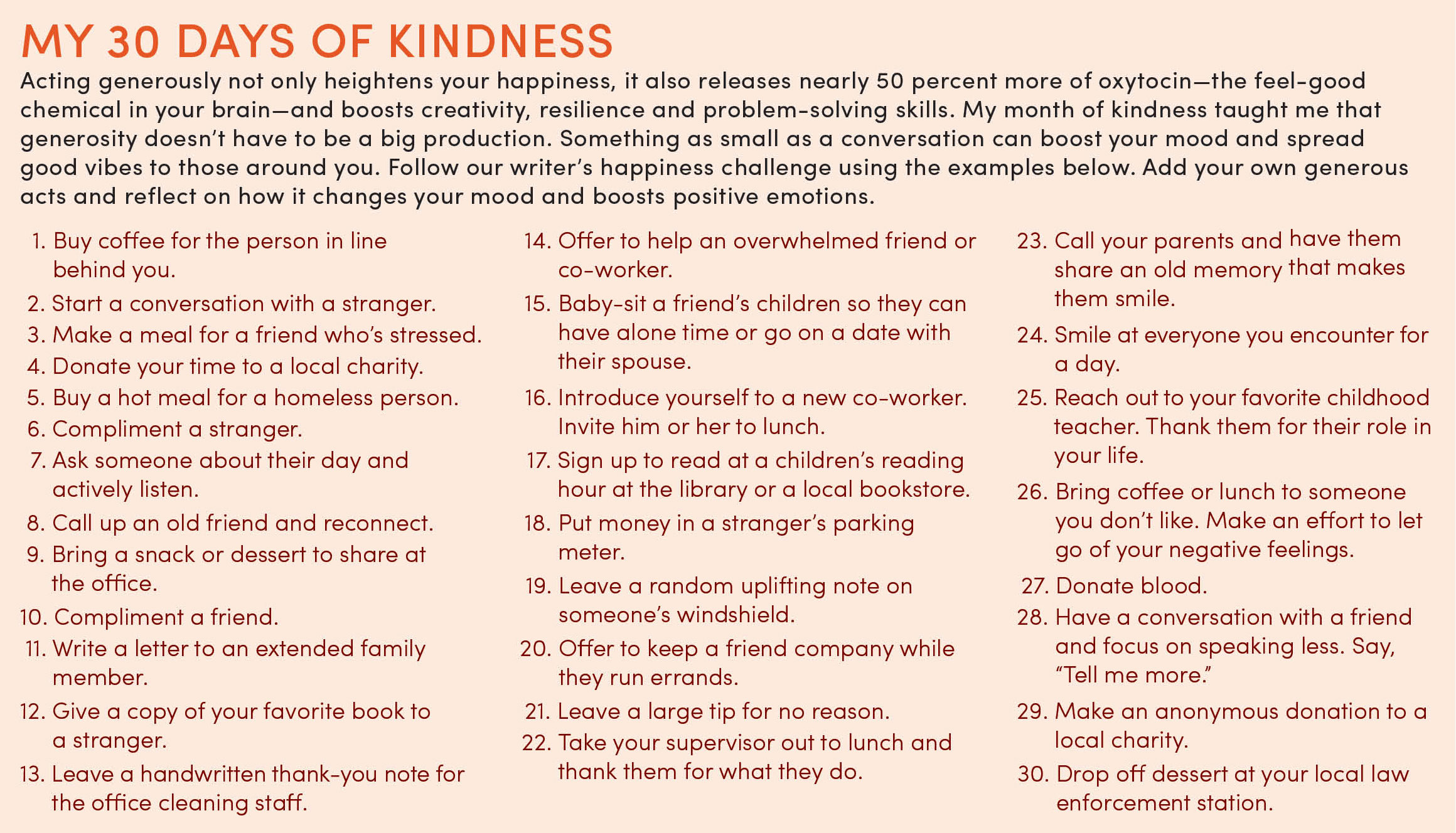
We aren’t consistently generous for a multitude of reasons, but in the traditional corporate setting, the prevailing enemy of generosity is the fear of appearing naïve. (And the possibility of going broke.) After all, isn’t the nice guy the one who finishes last? So we become “Givers” as Adam Grant Ph.D., details in his best-seller Give and Take. In the modern workplace, we are no longer solely evaluated on our work performance, but rather on how we interact as a cohesive unit and how we contribute to the organization as a whole. In fact, Grant’s research reveals this new business landscape paves the way for Givers to succeed and Takers to be left behind. By helping others, we help ourselves.
The important thing to remember is that Givers—especially those predisposed to putting others’ needs before their own—need to know their boundaries. Grant says it begins with distinguishing generosity from its three other attributes: timidity, availability and empathy.
At the risk of sounding cliché, Cecilia admitted that her month of generosity did make her happier. Something about waking up and consciously planning to act selflessly lightened my step and made the morning drag easier to bear. Something about a stranger flashing a smile (albeit a confused one) as she handed them a dog-eared copy of her favorite memoir gave her an energy boost that a triple-shot latte never could.
For a precious hour or so every day, the fear, anxiety, stress and doubt of daily life didn’t plague her thoughts. She stated that she briefly forgot about herself, and it was intoxicating. Friends responded to her seemingly arbitrary good mood with confused laughs.When did being happy without reason become a cause for concern? she wondered. . . ?
Maybe, she thought, her heart was in the right place when she gave the blue-eyed man a hot meal. But maybe, she wondered, her ego was directing her actions that night in the pharmacy checkout lane. And maybe she avoided generosity toward her close friends and co-workers because it was more difficult. Buying coffee for a stranger is easy, detached and allows for a clean exit. Gently pushing a friend to divulge her source of anxiety after she says “I’m fine” is not. After all, altruism and honest self-reflection take time and practice.
Ultimately, thirty days of generosity didn’t make Cecilia a different person, but she did feel different. She didn’t actively look for ways to be generous, but noticed the opportunities anyway. Like the sticky note residue on her bathroom mirror, she could see gentle impressions of her growth where she least expect it: during rush hour, when she gave the benefit of the doubt to the woman cutting into her lane; after a long day of work, when she made time for the struggling friend who needed to talk; and, most important, in the moments when she forgot herself and realized the joy to be found in caring for the people around me.
SO. . .
What does this have to do with us?
N O T H I N G
u n l e s s
we make it
SOMETHING
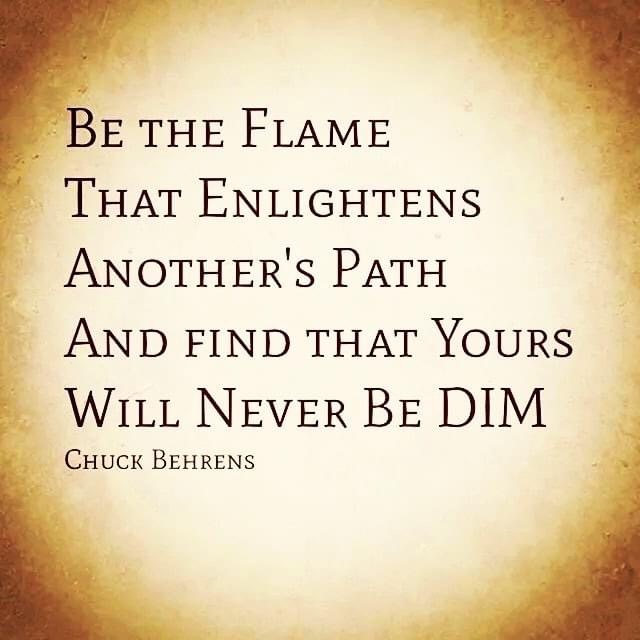
Go Ahead. . .
GIVE IT A GO
Blame it on the Season
. . .the One that’s Coming
and in essence, never ending
UNLESS YOU SAY SO
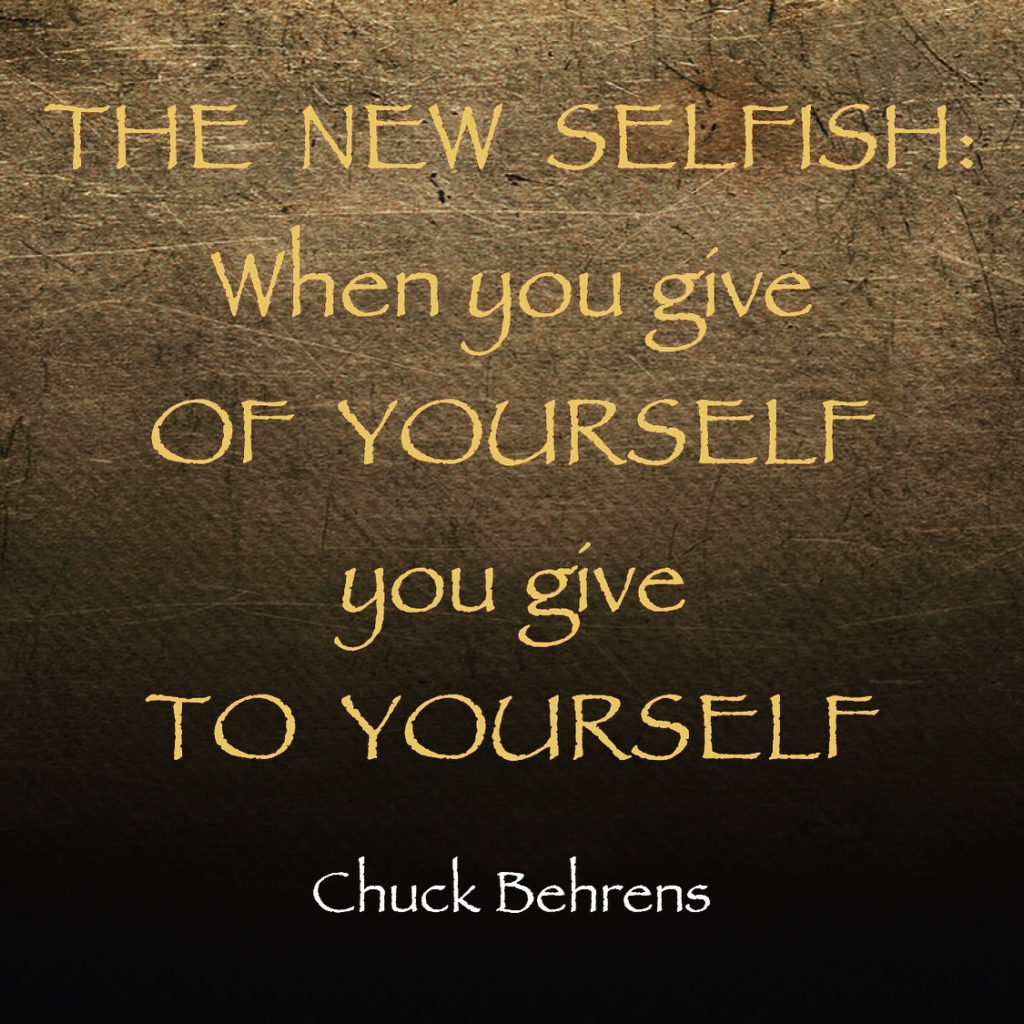 TAKE THE 30 DAY KINDNESS CHALLENGE
TAKE THE 30 DAY KINDNESS CHALLENGE
and
PROVE IT. . .
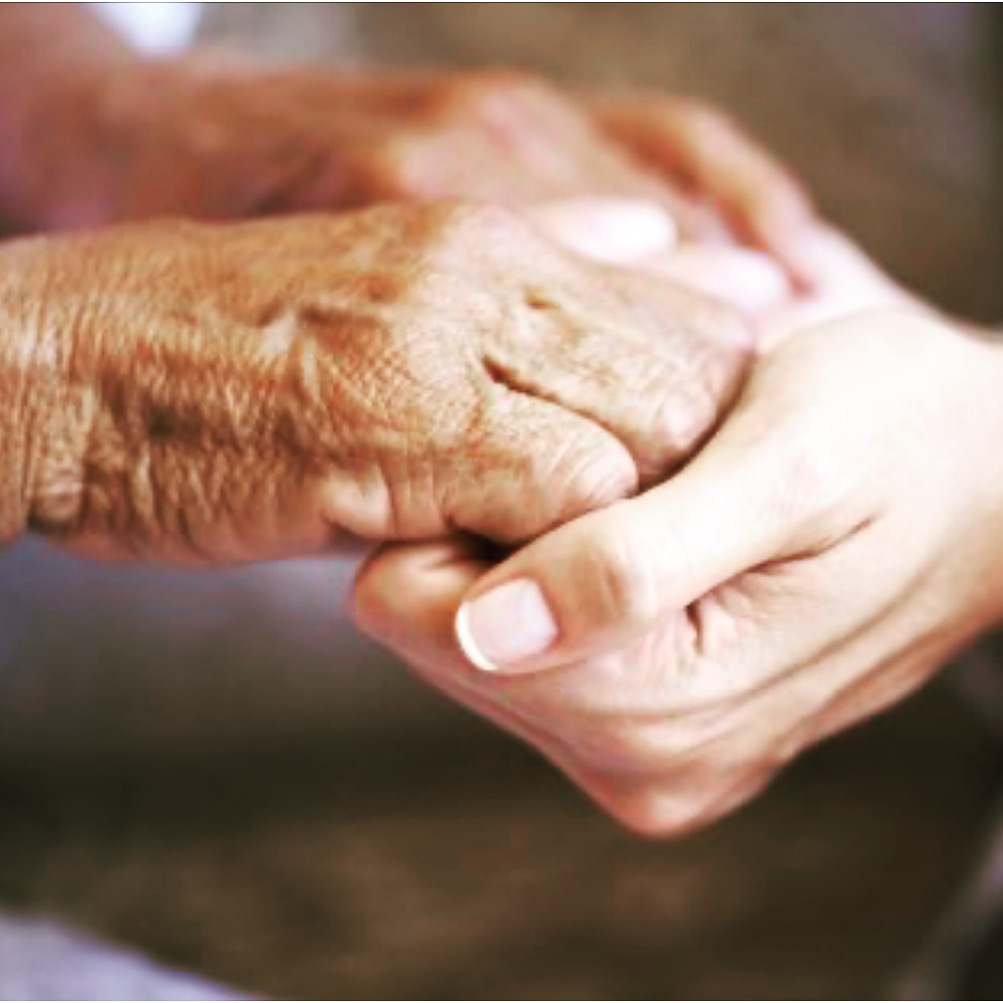
ALL-WAYS
r e a c h
for the hands
that need
c l a s p i n g
This past Fourth of July weekend, I read an article from the New York Times that tell us, Acts of kindness may not be that random after all. Science says being kind pays off. . .
And my first thought was,
“SERIOUSLY, DO WE NEED THIS RESEARCHED OUT TO FIND OUT IF IT’S TRUE; THAT IT’S REAL. . . ?”
Research shows that acts of kindness make us feel better and healthier. Kindness is also key to how we evolved and survived as a species, scientists say. We are hard-wired to be kind.
Kindness “is as bred in our bones as our anger or our lust or our grief or as our desire for revenge,” said University of California San Diego psychologist Michael McCullough, author of the forthcoming book “Kindness of Strangers.” It’s also, he said, “the main feature we take for granted.”
Scientific research is booming into human kindness and what scientists have found so far speaks well of us; especially during this pandemic time.
“Kindness is much older than religion. It does seem to be universal,” said University of Oxford anthropologist Oliver Curry, research director at Kindlab. “The basic reason why people are kind is that we are social animals.”
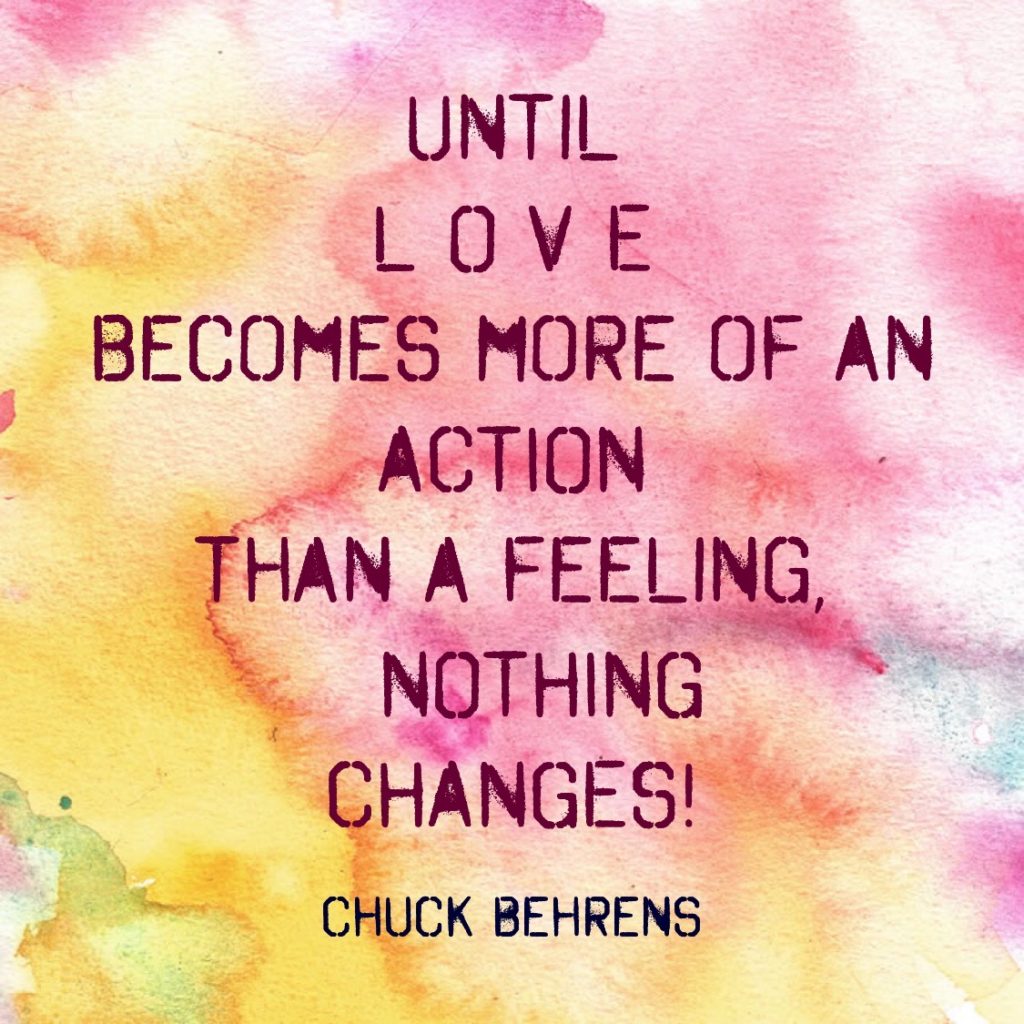
We prize kindness over any other value. When psychologists lumped values into ten categories and asked people what was more important, benevolence or kindness, comes out on top, beating hedonism, having an exciting life, creativity, ambition, tradition, security, obedience, seeking social justice and seeking power, said University of London psychologist Anat Bardi, who studies value systems.
“We’re kind because under the right circumstances we all benefit from kindness,” Oxford’s Curry said.
When it comes to a species’ survival “kindness pays, friendliness pays,” said Duke University evolutionary anthropologist Brian Hare, author of the new book “Survival of the Friendliest.”
Kindness and cooperation work for many species, whether it’s bacteria, flowers or our fellow primate bonobos. The more friends you have, the more individuals you help, the more successful you are, Hare said.
For example, Hare, who studies bonobos and other primates, compares aggressive chimpanzees, which attack outsiders, to bonobos where the animals don’t kill but help out strangers. Male bonobos are far more successful at mating than their male chimp counterparts, Hare said.
McCullough sees bonobos as more the exceptions. Most animals aren’t kind or helpful to strangers, just close relatives so in that way it is one of the traits that separate us from other species, he said. And that, he said, is because of the human ability to reason.

Humans realize that there’s not much difference between our close relatives and strangers and that someday strangers can help us if we are kind to them, McCullough said.
Reasoning “is the secret ingredient, which is why we donate blood when there are disasters” and why most industrialized nations spend at least 20% of their money on social programs, such as housing and education, McCullough said.
Duke’s Hare also points to mama bears to understand the evolution and biology of kindness and its aggressive nasty flip side. He said studies point to certain areas of the brain, the medial prefrontal cortex, temporal parietal junction and other spots as either activated or dampened by emotional activity. The same places give us the ability to nurture and love, but also dehumanize and exclude, he said.
When mother bears are feeding and nurturing their cubs, these areas in the brain are activated and it allows them to be generous and loving, Hare said. But if someone comes near the mother bear at that time, it sets of the brain’s threat mechanisms in the same places. The same bear becomes its most aggressive and dangerous.
Hare said he sees this in humans. Some of the same people who are generous to family and close friends, when they feel threatened by outsiders become angrier. He points to the current polarization of the world.
“More isolated groups are more likely to be feel threatened by others and they are more likely to morally exclude, dehumanize,” Hare said. “And that opens the door to cruelty.”
But overall our bodies aren’t just programmed to be nice, they reward us for being kind, scientists said.
“Doing kindness makes you happier and being happier makes you do kind acts,” said labor economist Richard Layard, who studies happiness at the London School of Economics and wrote the new book “Can We Be Happier?”
University of California Riverside psychology professor Sonja Lyubomirsky has put that concept to the test in numerous experiments over 20 years and repeatedly found that people feel better when they are kind to others, even more than when they are kind to themselves.
“Acts of kindness are very powerful,” Lyubomirsky said.
In one experiment, she asked subjects to do an extra three acts of kindness for other people a week and asked a different group to do three acts of self-kindness. They could be small, like opening a door for someone, or big. But the people who were kind to others became happier and felt more connected to the world.
The same occurred with money, using it to help others versus helping yourself. Lyubomirsky said she thinks it is because people spend too much time thinking and worrying about themselves and when they think of others while doing acts of kindness, it redirects them away from their own problems.
Oxford’s Curry analyzed peer-reviewed research like Lyubomirsky’s and found at least 27 studies showing the same thing: Being kind makes people feel better emotionally.
But it’s not just emotional. It’s physical.
Lyubomirsky said a study of people with multiple sclerosis and found they felt better physically when helping others. She also found that in people doing more acts of kindness that the genes that trigger inflammation were turned down more than in people who don’t.
And she said in upcoming studies, she’s found more antiviral genes in people who performed acts of kindness.
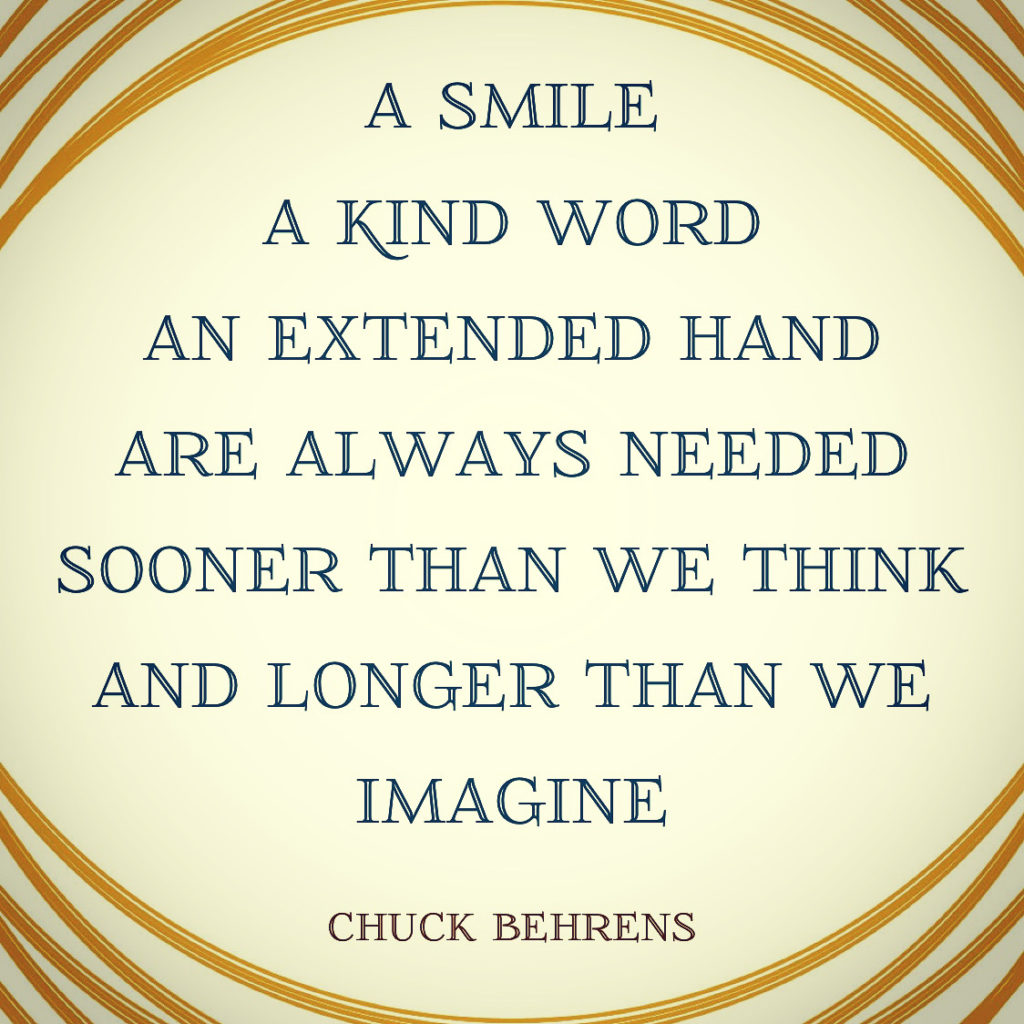
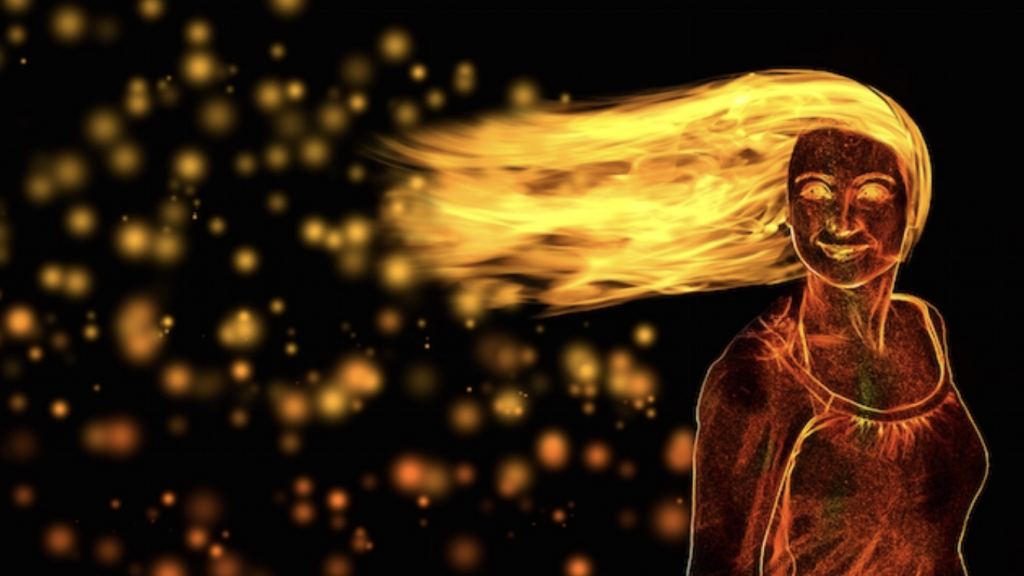
“Suppose you could be hooked up to a hypothetical “experience machine” that, for the rest of your life, would stimulate your brain and give you any positive feelings you desire. Most people to whom I offer this imaginary choice refuse the machine. It is not just positive feelings we want: we want to be entitled to our positive feelings.” — Dr. Martin Seligman
In 2014, a study led by neuroscientist Molly J. Crocket shed light on how much humans care about others relative to themselves. The results were surprising. They showed that, on average, people were willing to pay twice as much money to prevent someone else receiving an electric shock than the amount of money they would pay to prevent receiving the same amount of shock themselves.
At first, the conclusions seem puzzling. How does this fit with our survival bias, our innate sense of self-protection in the face of danger? A little experiment may help us understand this apparent contradiction.
In the next few days, do the following two things:
Plan both events and write about how you think doing those two different acts will make you feel. Then, immediately after completing the two activities, write down how you actually feel. At the end of the day, write down how you feel again, long after both events happened.
More likely than not, the high of doing something fun will last for a little bit and then fade away. It is a satisfaction that consumes itself shortly after the activity ends. If you go to the cinema and you enjoyed the movie, you will feel good after leaving the premises, but you won’t carry that feeling much longer after that.
However, if you perform a random act of kindness the feeling-good effect will endure for hours after the event happened. Try helping someone who can’t help you back; do it anonymously, or listening to someone in need. Or donating to a cause you truly believe in. The positive feelings stemming from the altruistic act will last for a long time after the event happened.
Positive psychology is the field behind the scientific theory of happiness. Not so long ago, psychology focused only on helping troubled minds go back to a healthy state; Patients suffering from depression and other mental disorders. It sought to bring these patients back from “-10 to 0” on the well-being scale.
Positive psychology, on the other hand, looks to answer the question “what can make a healthy mind thrive?”. It looks scientifically into how we can go from “0 to +10” on the well-being scale. The father of positive psychology is Dr. Martin Seligman, author of books like “Authentic Happiness” and “Learned Optimism” and the founder of the Positive Psychology Center at the University of Pennsylvania.
After years of research, he came up with 5 core pillars that act as the infrastructure to our psychological well-being and happiness. It is called the PERMA model:
You can experience all of these in a single act of giving, whether it’s sharing a meal with a friend or donating a large sum to a good cause.
Giving adds to our lives in many different ways, but is also exactly in line with the PERMA model.
However, giving goes well beyond facilitating positive emotions or better interactions with others. It can become a profound driver of our success in life, by contributing directly to the meaning and accomplishment components of the PERMA model.
In “Grit: The Power of Passion and Perseverance” by Penn’s psychologist Angela Duckworth, I learned about Kat Cole. Cole started her career waitressing at Hooters while finishing her high school. She later rose up to become vice president of the company at age 26. Today, Kat Cole is Group President of Focus Brands, an investor, humanitarian and advisor.
Here’s her attitude on giving:
“By doing good for just one person, in just one moment, you can affect the trajectory of many things, of many lives, all over the world. Even if in some situations it’s not easy to be kind, gracious or positive, keep in mind it’s not just that moment that you are affecting, it’s many moments into the future.”
She differentiates between productive achievers and destructive achievers. As per her own description in a recent interview:
“There are a lot of people who have been incredibly successful by the typical person’s definition, financially or in terms of career acceleration, but have done it destructively, by not lifting others up and bringing them along. Then there are those who have been productive achievers, who have also brought others along with them and made a difference.”
For Cole, her giving attitude implied raising others and bringing them along in her path towards growth. A deep sense of purpose, rooted on an abundance mentality, had a significant impact on her professional success.
Happiness has to be earned. It cannot be chased. It cannot be manufactured. Happiness is about the consistency of our daily actions with our principles. The way we respond to the daily demands of life. In that context, a virtuous circle of gratitude and giving — as proven by positive psychology, the science of happiness — becomes a critical element of a fulfilling life.
Psssssssssssssssssssssssssst:
LIFE is not a zero-sum game. An abundance mindset is both possible and practical. Science has shown our brains are wired to give because they prolong positive emotions from such interactions. Positive Psychology confirms this and gives us a model we can use to become productive achievers: PERMA.
S i m p l e Q u e s t i o n:
W H A T M A K E S Y O U H A P P Y ?
A good Cigar
Some fine music
Adult Beverage
A Book
A Beautiful Outside Setting
? ? ? ? ?
Not for everyone, huh?
Is there that overwhelming
100%
slam-dunk
one-size-fits-and-pleases-all
solution to
W O R L D
or
p e r s o n a l
H A P P I N E S S
Hmmmmmmmmmmmm. . .
the answer might not
uhhhh make yoiu
h a p p y. . .
Maybe it’s just being overemphasized;
Did you know that
H A P P I N E S S
has it’s own it’s own
h o l i d a y ?
Just a few years ago
The General Assembly of the United Nations
proclaimed MARCH 20
to the be the
International Day of Happiness. . .
Oops. . .
I missed it;
I didn’t celebrate. . .
But it is easy to see why
H A P P I N E S S
is worth celebrating:
Happy people are healthier;
they get sick less often
THEY LIVE L O N G E R
Happy people have better realtionships
more friends
make more money
are more productive at work. . .
Based on decades of research
it’s become very clear
that Happiness is not just a personal issue;
it’s a matter of public health,
global economics
and natural well being
B U T
it’s subjective, isn’t it?
THE GREATER GOOD SCIENCE CENTER
(Yes, it really does exist–Google it)
They simply recommend through
S C I E N T I F I C S T U D Y
ACKNOWLEDGE THE GOOD
(WRITE DOWN 3 THINGS A DAY YOU ARE GRATEFUL )
ADD HAPPINESS THROUGH SUBTRACTION
(GIVE IT UP PRACTICE–GIVE UP WHAT YOU REALLY LIKE JUST FOR A LITTLE BIT OF TIME SO YOU CAN APPRECIATE IT EVEN ALL THE MORE)
FIND MEANING AND PURPOSE
(TAKE PICTURES OF PEOPLE AND THINGS THAT ARE MEANINGFUL TO YOU AND LITERALLY JOURNAL FOR 15 MINUTES A DAY JUST ABOUT YOUR IDEAL FUTURE AND WHAT IT WOULD LOOK LIKE)
USE YOUR STRENGTH
(PICK ONE OF YOUR STRENGTHS AND USE IT EXCLUSIVELY IN A NEW AND DIFFERENT WAY FOR A WEEK AND THEN ANOTHER AND THEN ANOTHER. . . )
CONNECT WITH OTHERS
(JUST DO FIVE RANDOM ACTS OF KINDNESS A DAY–NOT OVER A WEEK, BUT A DAY FOR A WEEK; STUDIES SHOUT THAT WHEN YOU DO–GIVE–IT SIGNIFICANTLY MAKES YOU HAPPIER)
WHAT REALLY MAKES YOU HAPPY ?
It’s different for everyone
T H A N K F U L L Y
QUICK ANSWER:
WHATEVER FEEDS YOUR SOUL
but you’ve got to
ACTUALLY FEED YOUR SOUL
it won’t happen
through osmosis
IF HAPPINESS IS A TRAIN
YOU DON’T HAVE TO RIDE THE CABOOSE
OR JUST BE A PASSENGER
WATING TO GO TO THE DINING CAR
ENGINEER THAT TRAIN
AND TOOT-TOOT YOURSELF DOWN THE TRACK
NOT TO HAPPINESS
BUT TO YOUR
S E V E N T H H E A V E N
SEE YOU AT THE STATION!
CHOOO-CHOOOOOOOOOOOOOOOOO!
When was the last time you had a Little Sabbath?
If you’re waiting for the perfect Friday night at Sundown or Sunday morning–you’re waiting too long.
Little Sabbaths come about several times a day but like the threads of THE BACK; the UNDERNEATH side of a Tapestry we seldom notice.
Was it when someone smiled at you from across the room?
Was it when someone held the door open for you and let you in the Starbucks line before them?
Was it when you cut someone off in traffic and they actually smiled and waved at you?
Was it when someone put some extra change in your parking meter before you got a certain ticket?
Was it when you were eating breakfast and someone picked up your bill?
Was it when you came up short at the check out counter and someone put down their credit card for you?
Little Sabbaths happen several times a day but like the threads of THE BACK; the UNDERNEATH side of a Tapestry we seldom notice.
Was it when you anonymously sent a gift card in the mail, JUST BECAUSE?
Was it when you dropped off a meal or a nice dessert without warning to a busy family?
Was it when you celebrated Christmas a month before or better still two months afterwards?
Was it when you PURPOSELY overtipped a tired, overworked waitress?
Was it when you raked leaves or shoveled snow for a neighbor before they got home?
Was it when gave more than your pocket change to someone by the roadside asking for money?
Little Sabbaths are a lot like the Backs, the Underneaths of a Tapestry:
Loose ends, dangling strings, jumbled, tumbled up knots–all seemingly
M E A N I N G L E S
when you just look at the back
H A R R O W I N G
when you just look at the Underneath
because there’s no seeming reason, purpose, meaning for any of the brilliant or even dark colors or golden strands running aimlessly amok.
LITTLE SABBATHS
assure that every dangling string, loose end, tangled knots of the woven tapestry is connect, whether we can see the connections or not. The interconnected web of life, of which we are a part is, both complex and full of wonder:
LITTLE SABBATHS
We’re just not the back of a Tapestry with all of it’s loose ends. . .
We are indeed, the front of the Tapestry,
Especially with all of those dangling loose ends having distinct, absolute SIGNIFICANCE.
GET W O V E N. . .
and find the greatest LITTLE SABBATH of all is that you’ve never NOT been a part of the Tapestry!